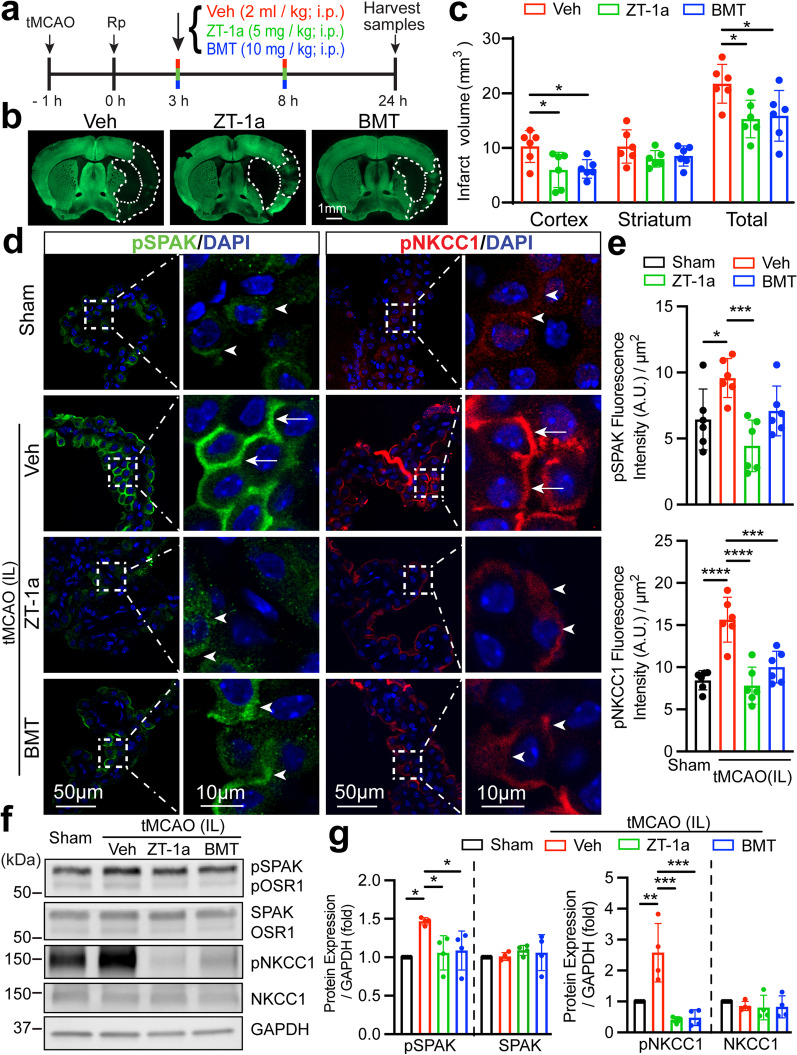Fig. 2.
Pharmacological suppression of SPAK–NKCC1 complex phosphorylation in choroid plexus after ischemic stroke. a Experimental protocol. Mice were subjected to tMCAO and randomly assigned to vehicle (Veh), ZT-1a or bumetanide (BMT) treatment group administered via intraperitoneal injection (i.p.) with a half-dose at 3 h and 8 h post-reperfusion (Rp), respectively. b Representative infarct images with MAP2 expression staining at 24 Rp. c Infarct volume quantification summary. Data are mean ± SD (n = 6, 4 male, 2 female). *p < 0.05. One-way ANOVA. d Representative immunofluorescent images of pSPAK and pNKCC1 staining in the Sham or ipsilateral (IL) LVCP post-stroke brains. Arrowheads: low level expression of pSPAK or pNKCC1. Arrows: elevated pSPAK or pNKCC1 expression. e Quantification summary. Data are mean ± SD (n = 6, 4 male, 2 female). *p < 0.05, ***p < 0.001, ****p < 0.0001. One-way ANOVA. f Western blot analysis of SPAK–NKCC1 cascade expression in the ChP of Sham, stroke Veh-control, ZT-1a- or BMT-treated mice. ChP tissue lysates were subjected to immunoblotting with the indicated antibodies. g Immunoblot summary. Data are mean ± SD (n = 4, 2 male, 2 female). *p < 0.05, **p < 0.01, ***p < 0.001. One-way ANOVA

